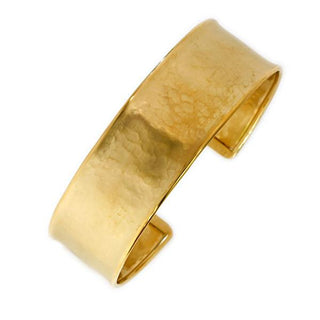Gold is a rare metallic element with the chemical symbol, AU, for the Latin word "Aurum, meaning Glowing Dawn.

The properties of Gold are unique to all other metals.
- Pure gold does not tarnish, rust or corrode.
- Gold can be melted and shaped into many forms
- Pure gold has a natural warm yellow color, it is colored by other metals added to it. All other precious metals are silver or grey.
- Gold can be alloyed with several other metals to increase its strength.
- Gold allows for different type of finishes; including, highly polished, satin, matte, hammered, diamond-cut and filigree.
- Gold is described in terms of karatage to indicate the pure gold content of a particular item. Karatage describes the parts of pure gold per thousand; for example, if an item is stamped (hallmarked)
- 750 is measure for 18k gold having 750 parts of gold per thousand, 75% pure gold and 25% alloy (another metal)
- 585 a measure for 14k gold, 58.5 % of pure gold
- 24k gold must contain a minimum of 99.0% gold
All jewelry should be hallmarked, or called 'fineness mark' with a stamp to indicate the value of the item and the percentage of the precious metal versus the alloy.
Gold items can be produced in a range of colors including, white, yellow, red, green, blue, black and purple. The variations are achieved by mixing pure gold with other metals.
White gold is produced by alloying pure gold with white metals; nickel, silver, palladium and zinc. Nickel should not be used for jewelry purposes because it causes allergies when worn on skin.
- Rose gold is produced by alloying pure gold with raising the ratio of copper to silver.
- Green gold is made by adding a combination of silver, palladium and copper.
- Variations in color also affect the properties of gold hardness and strength due to the different mix of alloy.
